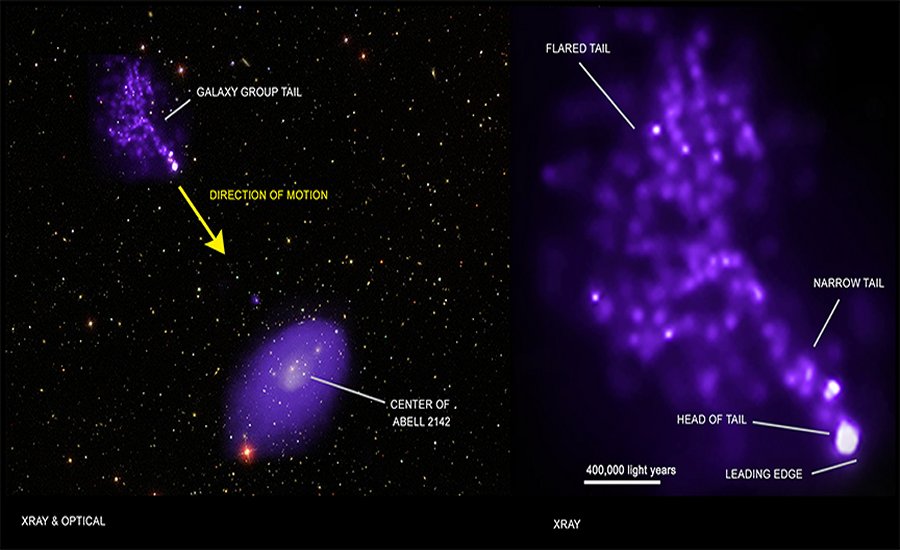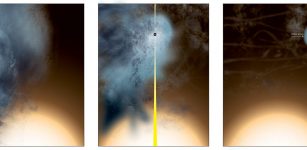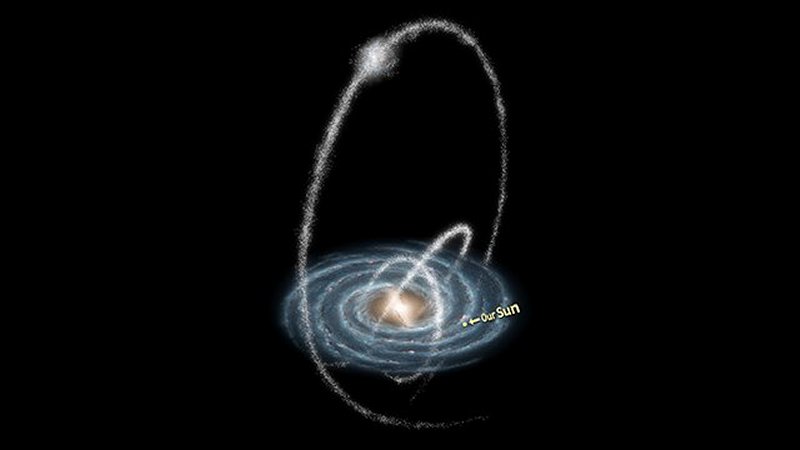Gigantic X-Ray Tail Of Hot Gas Spotted Thanks To Chandra X-ray Observatory
MessageToEagle.com – A gigantic X-ray tail of hot gas was spotted by astronomers using data from NASA’s Chandra Observatory.
The tail is stretching for more than a million light years behind a group of galaxies that is falling into the depths of an even-larger cluster of galaxies.

Galaxy clusters – the largest structures in the Universe – are held together by gravity.Galaxy clusters can contain hundreds or even thousands of individual galaxies, but the largest part of mass in a galaxy cluster comes from hot gas, which gives off X-rays, and unseen dark matter.
A bright X-ray tail located in the upper left of the image is aiming straight for Abell 2142. The right panel contains a closer view of this tail. A galaxy group containing four bright galaxies is near the “head” while the “tail” extends off to the upper left. The direction of the tail and the sharp leading edge of the hot gas around the galaxy group, identified in the labeled version, shows that the group is falling almost directly towards the center of Abell 2142. A close-up view of the four bright galaxies (named G1, G3, G4 and G5) is shown as an optical and X-ray image. The galaxy G2 is a background object, rather than a member of the galaxy group.
As the group of galaxies falls into Abell 2142, some of the hot gas is stripped off, much like leaves from a tree in the fall during a strong gust of wind. As the gas gets stripped off, it forms into a straight and relatively narrow tail that extends for some 800,000 light years. The shape of the tail suggests that magnetic fields draped around it are acting like a shield to contain the gas. Beyond about a million light years, the tail flares and becomes irregular. This may mean the turbulence in the galaxy cluster’s hot gas is stronger in that area, helping to break down the effect of the magnetic shield.
The lower side of the tail flares out more than the upper side. This may be caused by a previous asymmetry in the hot gas in the galaxy group. Such an asymmetry could result from an outburst generated by a supermassive black hole in one of the galaxies in the group, or from mergers between galaxies in the group. Such events could lead to some parts of the galaxy group’s gas being stripped more easily than others.
The new Chandra data also confirm that two of four bright galaxies in the group, G3 and G4, contain rapidly growing, supermassive black holes. The two corresponding X-ray sources are closely overlapping in the Chandra image.
MessageToEagle.com











